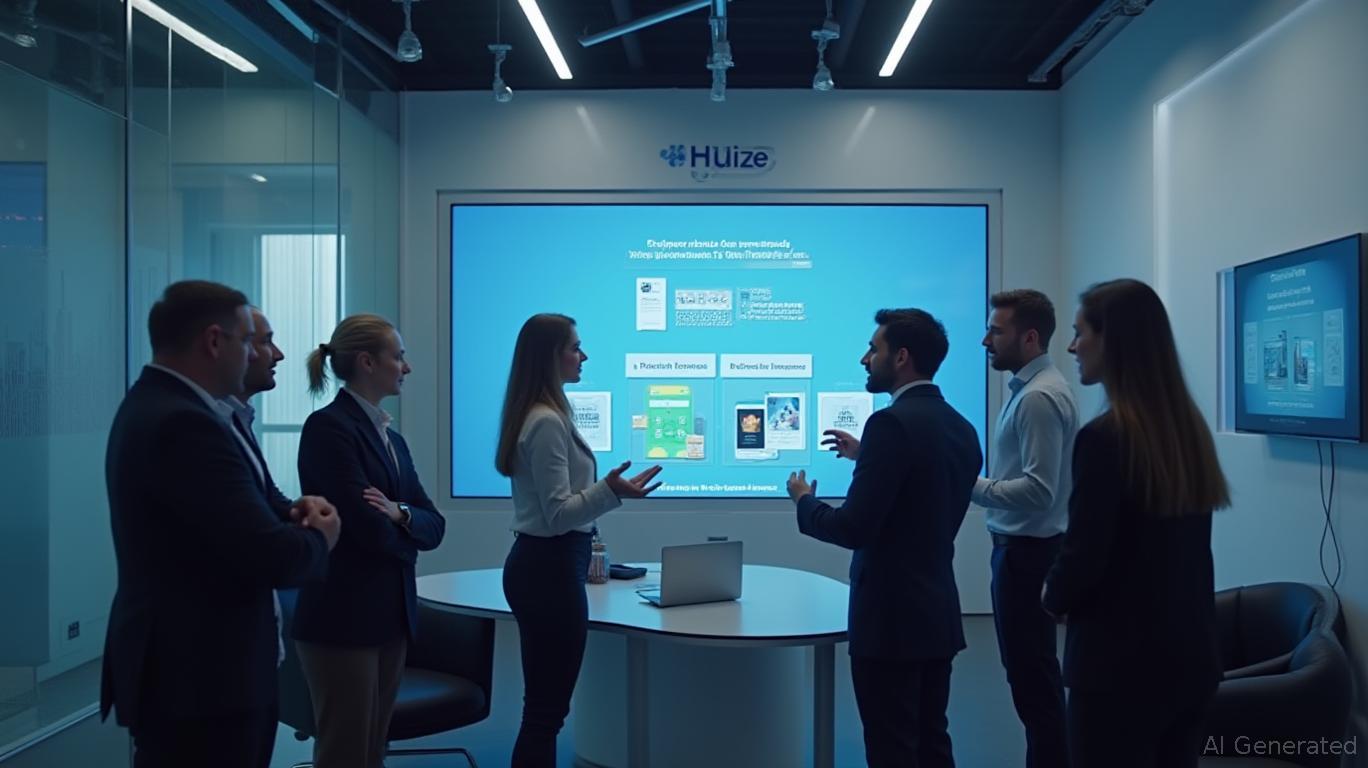Huize Holding Limited's Q1 2025 Results: Operational Efficiency and AI-Driven Growth Signal Long-Term Potential
Huize Holding Limited, a leading Asian insurance technology platform, has released its Q1 2025 financial results, painting a picture of a company balancing short-term challenges with strategic progress. While year-over-year declines in core metrics like Gross Written Premiums (GWP) and First Year Premiums (FYP) highlight lingering market headwinds, sequential improvements in revenue, cost optimization, and AI-driven innovation suggest a path to sustained growth. For investors, the quarter underscores Huize's transition from a volume-focused model to one prioritizing high-quality customers and operational efficiency—a shift that positions it as a compelling play in the evolving Asian insurance tech sector.
Operational Efficiency Gains: A Foundation for Profitability
Huize's Q1 results reveal a sharp focus on cutting costs without sacrificing growth. Total operating expenses fell by 28.9% sequentially, driving the expense-to-income ratio from 40.7% to 29.1%—a 11.6 percentage point improvement. This efficiency gain is critical, as it directly addresses the company's net loss of RMB8.6 million in Q1 2025 compared to a RMB6.9 million profit in the same period last year. While the loss is concerning, the reduction in costs suggests Huize is executing a disciplined strategy to stabilize margins.
The sequential rebound in premiums—37.8% growth in GWP and 30.9% in FYP—also signals underlying demand. Though these figures remain below Q1 2024 levels (down 16.3% and 14.8% YoY, respectively), the strong quarter-over-quarter improvement hints at stabilization in a market still grappling with low interest rates and competitive pricing pressures.
AI Integration and Product Innovation: A Competitive Edge
Huize's most compelling growth driver lies in its AI-powered solutions, which the company has deployed to enhance customer targeting, underwriting, and retention. For instance, the platform's AI tools now analyze customer data to tailor insurance products to the needs of its core demographic: young, urban consumers aged 35, with 66.4% based in higher-tier cities. This focus aligns with a broader trend toward mass affluent consumers seeking personalized financial protection.

The company's customized insurance products, particularly in the participating insurance segment, are resonating with this demographic. Meanwhile, partnerships with insurers like New China Life and Aviva-COFCO are expanding distribution channels, while new markets in Singapore and the Philippines offer untapped growth. These moves reflect Huize's ambition to dominate the pan-Asian insurance tech space, leveraging AI to offset traditional distribution costs.
Customer Metrics and Market Expansion: Strength in Retention
Huize's customer retention metrics are particularly robust. 13th and 25th month persistency ratios for long-term insurance products exceeded 95%, indicating strong loyalty among policyholders—a critical factor in an industry where customer churn can erode profitability. The company's focus on higher-tier cities, where customers are wealthier and more likely to invest in insurance, further underscores its high-quality client base.
The expansion into Southeast Asia is another strategic win. Markets like Singapore and the Philippines, with underpenetrated insurance sectors, offer 30–40% annual growth potential for tech-enabled platforms like Huize. By replicating its AI-driven model in these regions, the company could replicate its success in China on a broader scale.
Addressing Year-Over-Year Declines: A Necessary Trade-Off
The YoY declines in GWP and FYP are undeniable, but they should be viewed through the lens of Huize's strategic pivot. In 2024, the company prioritized volume to capture market share, often at lower margins. In 2025, the focus has shifted to profitability by targeting higher-margin, high-quality customers—a deliberate trade-off that may take time to pay off.
Moreover, the 13.5% decline in cash reserves (to RMB201.7 million) reflects both ongoing investments in AI and short-term losses. While this raises liquidity concerns, the company's partnerships with 143 insurers and strong persistency ratios suggest it can weather the transition.
Investment Considerations: A Long-Term Play
Huize's Q1 results are a mixed bag, but they highlight a company in transition. The operational efficiency gains and AI-driven growth initiatives are clear positives, while the YoY declines and cash burn are manageable risks. For investors, the key question is whether Huize can convert its cost savings and product innovation into sustained profitability.
If the sequential revenue momentum continues and the expense ratio improves further, a return to profitability is plausible by late 2025 or 2026. The expansion into Southeast Asia and the retention of high-quality customers also bode well for long-term scalability.
Conclusion: A Compelling Risk-Adjusted Opportunity
Huize Holding Limited's Q1 results are a reminder that growth in the insurance tech sector requires patience. The company's focus on operational efficiency, AI-driven innovation, and high-margin customer segments positions it to thrive in Asia's evolving financial landscape. While near-term profitability remains uncertain, the strategic moves outlined in Q1 suggest Huize is building a sustainable model for the future.
For investors with a long-term horizon, Huize's valuation—assuming it can stabilize margins—could offer attractive upside. However, caution is warranted until the company demonstrates consistent profitability and stabilizes its cash position. In a sector where technology and data are king, Huize's progress so far makes it a name to watch closely.
Stay tuned for insights from the company's earnings call on June 6, 2025, where management will likely provide further clarity on its path to profitability and growth plans.

Comments
No comments yet